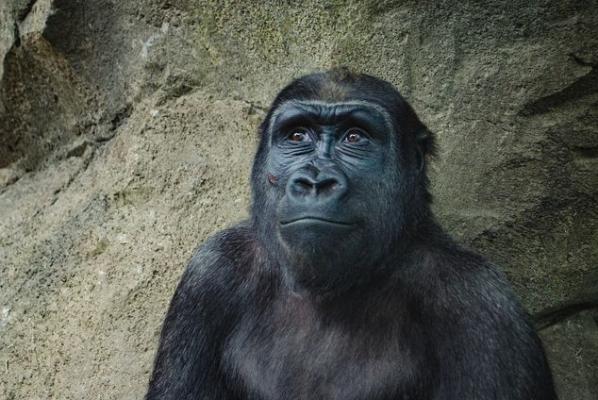
Feb. 9 (UPI) — What is the evolutionary origin of humans’ social intelligence?
Earth is home to thousands of species that prove complex language, social bonding and cooperation aren’t inevitable or even necessary for survival. And yet, the planet’s most successful species is also its most socially intelligent and complex.
What set us on this course? What jumpstarted mankind’s divergence from primates?
At least one group of researchers, led by Kent State‘s Mary Ann Raghanti, believe a shift in brain chemistry provided the necessary spark.
Many scientists have looked to the brain for clues to the evolutionary origins of humans. But research has shown changes in brain shape and size don’t neatly correspond with the emergence of humans.
“Something changed before the brain got big, before we developed this expanded cerebral cortex,” Raghanti told UPI.
In fact, one study recently found the brains of the earliest Homo sapienslooked more like the brains of their more primitive predecessors than those of modern humans.
Raghanti and her colleagues decided to look for differences in chemical signatures among the brains of humans and other primates, including tufted capuchins, pig-tailed macaques, olive baboons, gorillas and chimpanzees.
The scientists studied the density of their brains’ axons, the nerve endings that transport neurotransmitters, in slices of the basal ganglia, a portion of the striatum, a region key to the neural pathways controlling movement, learning and social behavior.
Different types of axons are linked with different types of neurotransmitters.
“The more axons you have, the more neurotransmitters you have,” Raghanti said.
Going into the testing phase, Raghanti expected to find a linear correlation between specific neurotransmitters, like serotonin and neuropeptide Y, and cognition.
“Monkeys have this much, apes have a little more and humans have the most,” Raghanti said. “It wasn’t like that at all.”
It wasn’t until Raghanti and her research partners looked at the full compliment of neurotransmitters that they began to see a major pattern. Great apes and humans did have elevated levels of serotonin and neuropeptide Y, brain chemicals linked with social cognition. Humans also featured elevated levels of dopamine and decreased levels of acetylcholine, a neurotransmitter linked with aggression.
Researchers believe their results, published in the journal PNAS, reveal the chemical combination that gave humans and their predecessors an evolutionary advantage.
“In many species, you have some amount of variation in personality types,” Raghanti said.
Researchers believe early environmental conditions — when apes first came down from the trees — made the more socially intelligent and less aggressive end of the continuum advantageous to adaptation, survival and reproduction.
“Over evolutionary time you begin to get a feedback loop, it feels good to cooperate and affiliate,” Raghanti said.
At first, serotonin and dopamine may have encouraged male provisioning and monogamy, improving the survivability of the most cooperative and least aggressive apes. As these patterns become reinforced through natural selection, shifting brain chemistry could have encouraged cooperation and social learning, the type of behavior that enabled group hunting, tool usage and the development of language.
Raghanti’s research fits neatly with a separate but related study led by Richard S. Meindl.
Meindl and his colleagues, including C. Owen Lovejoy, who also assisted Raghanti’s work, looked at the reproductive characteristics of macaques, one of the most demographically successful primates on the planet — second only to humans.
The researchers found female survival rates were the key to macaques’ improved reproductive success. And it’s this advantage that makes macaques a weed species — a species very successful in disturbed habitats.
“The fundamental elements of Darwin’s theory of evolution are differential fertility and differential mortality,” Meindl said. “These are also the fundamental elements of demographic success.”
Monkeys have been going extinct for millions of years. Their diversity is shrinking. Meindl hypothesized that the reproductive success of the most demographically successful primates today likely explains the success of the earliest hominids.
The most successful primates today are characterized by irregularly elevated female survival.
“That’s how they’re able to bounce back from major diebacks,” Meindl said.
Meindl’s research showed a decrease in mortality, not an increase in fertility, explains the reproductive success that allowed modern primates to maintain and grow their lineages as others died off.
That’s where Raghanti’s research fits in: the brain chemicals that encouraged social cohesion and diminished aggression encouraged female survival. With fewer females caught in the crossfire of fights and more males hoarding provisions for their partners, females had a greater chance of reproducing.





